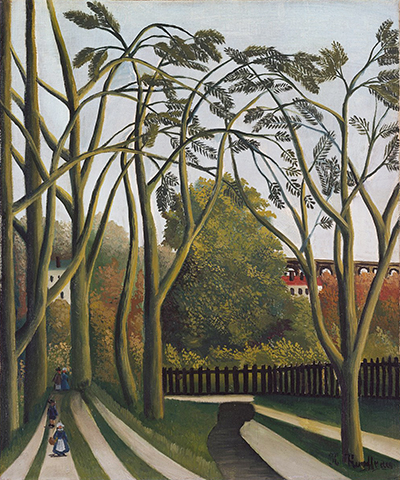Henri Rousseau drew the Banks of the Bievre near Bicetre in Paris in around 1909. This was towards the end of his life as he passed on in 1910. The image was a painting of oil on canvas that marked a new dawn in art at the beginning of the 20th century.
This painting is currently housed at the Metropolitan Museum of Art in New York City. The painter attached the subject of his painting of the handwritten note to its stretcher and consigned it to a dealer called Ambroise Vollard. It was a painting of a scene around Bicetre. This working-class community lived on the southern edge of the Paris city around the Bievre River. The river is now buried underground as it crosses through a section of the city. However, it was a waterway during those days, heavily polluted but still offered picturesque views in the areas around it.
In the painting, Henri shows long, deciduous trees in the foreground and a pathway that criss-crosses the trees. On the right is a wooden fence that crosses the river, sealing off a piece of land that is heavily forested with all-weather trees. In the background are buildings, partly obscured by trees such that only the rooftops and windows are seen. Viewers can see more people walking among trees on the left of the image. Besides, Henri shows an aqua blue sky with trees swaying to the cool breeze. This setting gives the impression that the painting was done during the day.
The Style of Painting
Henri Rousseau used the post-impressionism style of art to create The Banks of the Bievre near Bicetre. This style was a rebellion against the treatment of light by impressionists, which distorted the look and feel of nature in the paintings. The style went on from 1886 to 1905 and gave birth to Fauvism. The style is marked by vivid colours, with an inclination to painting items, as they look in general real life. Besides, painters paint real-life subject matter with a picture-like depiction of the trees, buildings and human beings. In addition, the images emphasised geometric forms in creating various effects in the painting.
One difference with other landscape images is that the style distorts form for the expressive effect. It may also make use of arbitrary colour to achieve specific outcomes. This effect is seen in the extra-large size of trees in comparison to other objects in the painting. However, it is still easy to identify each object with certainty. Other painters who embraced the post-impressionist painting style include Vincent van Gogh, Paul Gauguin, Paul Cezanne and Georges Seurat.




